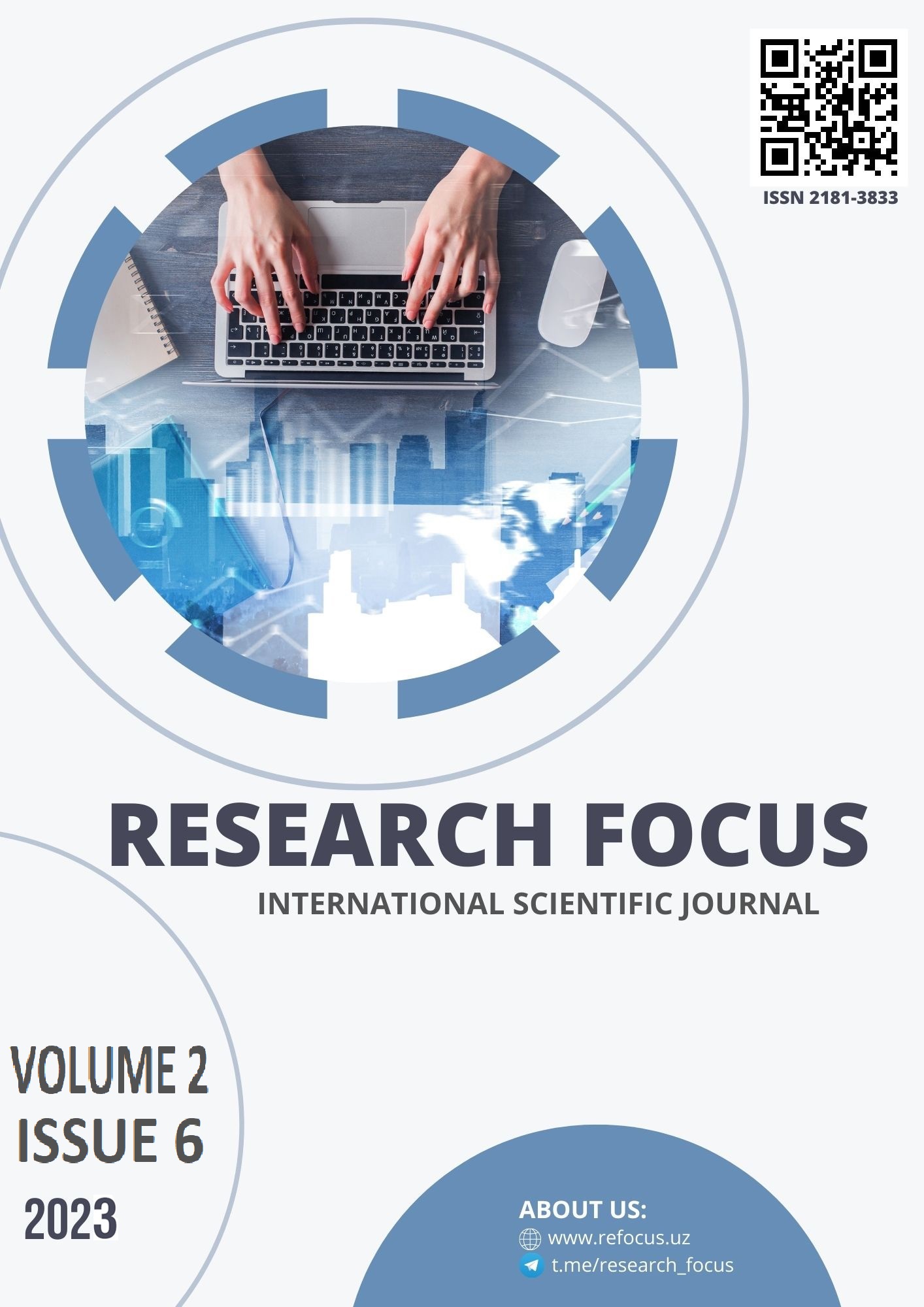MASOFADAN BOSHQARILADIGAN PORTATIV IPAK QURTI YETISHTIRISH TIZIMI
Main Article Content
Abstract
Ushbu ish ipak qurtidan olingan ipak tolalarining vazni va sifat ko'rsatkichlarini yaxshilash uchun innovatsion yondashuvni taqdim etadi. Biz an'anaviy ipak ishlab chiqarish usullaridan ustun bo'lgan engil va uzoqdan boshqariladigan ko'chma ipak qurti etishtirish tizimini taklif qilamiz. Issiqxonaga maxsus sensorlarni kiritish orqali tizim karbonat angidrid (CO2) darajasini masofadan turib kuzatish imkonini beradi. Tadqiqotimiz davomida biz mexatronik tizim bilan jihozlangan ko'chma ipak qurti fermasi va boshqa an'anaviy qurt fermalari o'rtasida ipak tolasi hosildorligini qiyosiy tahlil qildik. Topilmalar mexatronik komponentlar, jumladan sensorlar, o'rni, shamollatish tizimlari va motorlar muhimligini ta'kidlab, qurtlar uchun mobil fermaning samaradorligini qo'llab-quvvatlaydi.
Article Details

This work is licensed under a Creative Commons Attribution 4.0 International License.
References
H. Kai and K. Hasegawa, “Studies on the mode of action of the diapauses hormone with special reference to the protein metabolism in the silkworm, Bombyx mori L.The diapuse hormone and the protein suble in ethanol containing trichloro acetic acid in mature eggs of adult ovaries,” Journal of Sericultural Science of Japan, vol. 40, pp. 199–208, 1971.
J. Kobayashi, H. E. Edinuma, and N. Kobayashi, “The effect of diapause egg production in the tropical race of the silkworm, Bombyx mori L,” Journal of Sericultural Science of Japan, vol. 55, pp. 345–348, 1986.
G. Vemananda Reddy, V. Rao, and C. K. Kamble, Fundamentals of Silkworm Egg Bomby mori, L., Edited by G. K. Kamble, Silkworm Seed technology Laboratory, Bangalore, India, 2003.
E. Kittlans Die, “Ebmryohalant wicklung von Leptinotarsa decemlineata, Epilachna sparsa and Epilachna vigintiocto maculata in abhangigkeit von der temperature,” Deutsche Entertainment, vol. 8, pp. 41–52, 1961.
O. Yamasita and K. Hasegawa, “Embryyonic diapauses,” in Comprehensive Insect Physiology Biochemistry and Pharmacology, G. A. Kerkut and G. A. Gilbert, Eds., vol. 1, pp. 407–430, Pergaman Press, Oxford, UK.
S. K. Mathur and S. B. Lal, “Effects of temperature and humidity on the adaptability of insects?” The Indian Textile Journal, vol. 136, pp. 34–47, 1994.
M. V. B. Mathur and R. K. Rajan, “Effect of light on incubation,” Indian Silk, vol. 33, no. 8, pp. 45–46, 1991.
S. N. M. Biram and P. Gowda, “Silkworm seed technology,” in Appropriate Sericulture Techniques, M. S. Jolly, Ed., pp. 35–62, Central Silk Board, Bangalore, India, 1987.
S. N. M. Biram, S. Tribhuwan, and S. Beera, “Occurrence of unfertilized eggs in the mulberry silkworm, Bombyx mori L., (Lepidoptera: Bombycidae),” International Journal of Industria, vol. 18, pp. 1–7, 2009.
R. Govindan and T. K. Narayanaswamy, “Influence of refrigeration of eggs of multivoltine silkworm, Bombyx mori L. at eye spot stage on rearing performance,” Sericologia, vol. 26, no. 2, pp. 151–155, 1986.
Kumar NS, Lakshmi H, Saha AK, Bindroo BB, Longkumer N. Evaluation of Bivoltine Silkworm Breed of Bombyx mori L. Under West Bengal Condition. Universal Journal of Environmental Research and Technology 2012;2(5):393-401.
Mehta P. Science behind Acid Rain: Analysis of Its Impact and Advantages on Life and Heritage Structure. South Asian Journal of Tourism and Heritage 2010;3(2):123-132.
(2):81-87

